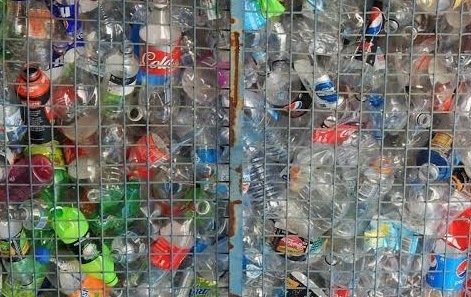New Development in Plastic Industry:
We have come a long way from the black Bakelite phones and radio cases. In fact, your new coffee cup may actually be made from corn-based plastics. While the origins of man-made polymers can be traced to the nineteenth century, the development of novel plastic materials and break-through applications continue at an intense pace.
Just when the industry seems to be slowing down, a next generation of performance plastics is being developed that takes its cue from nano-,bio- and composite technologies. In this article, we will discuss the current state of the plastics industry and delve into the innovative materials and applications that will stimulate a new level of market demand. We will also assess the impact of new technologies on plastics companies and on communities seeking to retain and attract plastics industry businesses.

(Corn Based plastic glass)
Plastic:
Plastics are known for their material properties of moldability, favorable weight to strength ratios, corrosion and water resistance, and other characteristics. It is a ubiquitous material with major applications as a packaging material; as components in transportation equipment, machinery, medical devices, appliances, and electronics equipment; as a construction material; as an adhesive and coating substance; as medical supplies; and countless other applications..
Developing Plastic Materials and Their Applications
Plastics are typically comprised of a base resin that is compounded with fillers, plasticizers, color-enhancing pigments and other additives that are proportioned to some well-defined formula to achieve specific results. There are thousands of resin/additive combinations that are utilized to make different products and the ultimate performance of given plastic material is derived from both the chemistry of the base resin and its interaction with the types and proportions of additives that are utilized.
Radio Frequency (RF) Embedded Plastics
The RF system is essentially a signal generator embedded in a plastic medium that can take on different shapes and be utilized for highway toll tags, amusement park wrist bands, building security system badges, clothing inventory tags, library book management, cargo container seals and tracking systems, hospital patient tracking, childcare tracking – the list is endless and growing rapidly.
The production of specific long-run applications will quickly become a commodity but the development of new applications will continue to be a knowledge-based activity. There may be some high security or high value, small production run applications that will not migrate to the lowest cost production destination.

(Wrist band used & many more made by new developed plastics)
Some of the immediate applications for nanocomposites include automotive and aerospace components; military hardware; electronics; medical devices; timed release of biocides and dyes; barrier layers within food packaging; semiconductor/polymer device for improved photovoltaic solar cells; foam applications for seat cushions, disposable diapers; packaging materials – the list seem endless. Nanocomposites will be a key player in the on-going materials revolution that will produce many new product applications.
Smart Polymers
This includes a series of polymers that respond in shape and displacement to changes in the environment, such as temperature, amount of light, presence of water or pH. In many cases it is a non-linear response such that the shape change can be significant based on a minimal stimulus. When the stimulus is removed, the material can resort back to its original shape. There are a host of applications for these materials in surgical and other medical situations, remote actuated valves and switches at the micro and macro level for industrial and medical use, and many other opportunities.
Bioplastics
An emerging product is a polylactic acid (PLA) polymers that are derived from converting starches and sugars from corn and sugarcane into resin pellets.
The Role of Location in the Plastics Industry
Location does play a role in plastics companies and differs over the life cycle of a particular product. In the early phases of product development, there is a need to locate near, or at least have direct access to, R&D. This may be the co-location of a company’s R&D function with a university’s polymer program or with a technology partner.
The location will have reasonable access to transportation and business services along with a favorable quality of life and options for spousal employment. Exact location requirements will vary by company and product mix.




